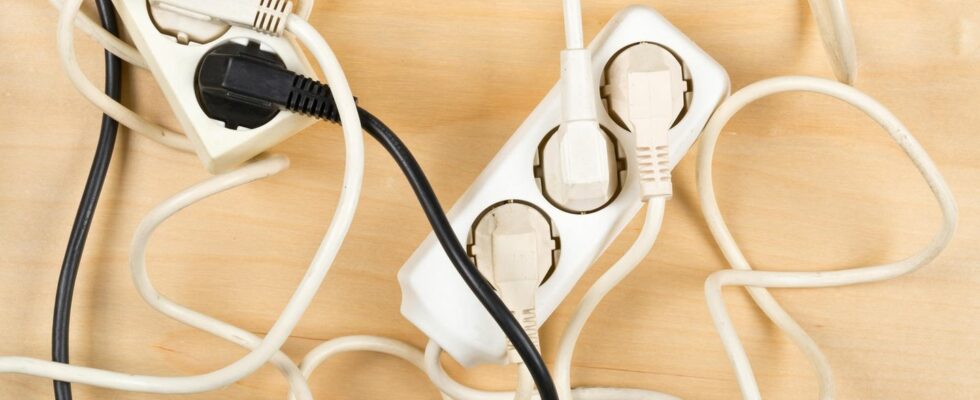hide cables
This is how you declare war on cable clutter
© Shawn Hempel / Adobe Stock
A tangle of cables quickly makes any (living) room, no matter how lovingly furnished, unsightly. We show 5 tips to better hide cables.
Whether behind the TV and hi-fi cabinet, at the carefully furnished home office workplace or on the telephone and router: there is no escaping cable clutter. But since in most cases we cannot do without our electronic devices – and they need electricity or have to be connected to each other – there are only two options: come to terms with the unsightly tangle – or invest in clever gadgets that hide the cables .
In addition to the look, there are a number of other good reasons to arrange and hide cables neatly:
- Tripping hazards caused by loose cables lying around on the floor are eliminated.
- The risk of a cable fire from kinked and damaged cables is reduced.
- Cable ducts and the like protect cables from curious children’s hands – and vice versa.
Hiding Cables: Product Overview
Better cable management is one of the top interior design tips for a tidier home. The selection of products is large. Which solution is the best also depends heavily on where you want to hide cables. We will show you 5 options for a wide variety of applications.
1st option: cable hose
A cable hose is one of the easiest alternatives for bundling several cable strands at the same time and at least hiding them a little. The hoses come in different lengths and, since they are made of fabric, can also be shortened as desired. The self-adhesive sleeves are simply placed around the bundled strand of cables and hold them together. Of course, the strand of cables is not completely out of sight – but the hose is a good solution for bringing order to the tangle behind the television and PC monitor.
2nd option: cable box
Our second option is also particularly popular for use on the TV bench – because it is also a visually appealing option that you can use to decorate the shelf at the same time. In addition, it is also predestined for hiding cables in the telephone socket: because in a practical way cable box Not only will cables and multiple sockets disappear, but also entire routers, depending on their size. Clever openings ensure that the cables can not only be routed into the box, but also that there is always access to hidden power strips – for example to quickly plug the smartphone into the socket.
3rd option: cable duct
The solution based on the motto “beautiful living”: a Cabel Canal. Depending on the price range, these models are mostly made of plastic, but also of higher quality materials such as aluminum and can be attached to baseboards, vertically to walls or simply to the floor using glue or screws. Plastic cable ducts, for example, are ideal for laying longer cables on the floor; fancier models can be an eye-catcher to run the cables to the Smart TV hanging freely on the wall – an almost invisible solution if you want to hide the cables for the TV.
4th option: cable basket
One way many of us know from the office is this cable basket. It is ideal for cleverly and securely hiding cables and multi-strips under the desk – and always having them within reach. Depending on the model, the baskets can be screwed on or simply glued on.
5th option: cable ties and cable clamps for a small budget
Not the best way to really hide cables, but still an inexpensive option for better cable management: zip ties as well cable clamps. Cable clamps (or cable clamps) are perfect for safely laying individual cables along baseboards or on the underside of a desk. There are both cable clamps for nailing and models for gluing. Cable ties, on the other hand, are a cheap way to combine several loose cables into one strand. Our tip: Invest in reusable cable sleeves with Velcro fastener.
This is the best way to hide cables
For a better overview, we will briefly show you which options are best suited for which location:
- Hiding cables on the TV wall and television: The inexpensive cable hose is the ideal solution for televisions on closed sideboards or chests of drawers; a cable box is ideal for open shelves. With a hanging Smart TV, investing in a cable duct is worthwhile.
- Hiding cables on the desk: The cable basket for the back or underside of the desk is perfect for use in the home office. Cables that are to be placed permanently can be routed excellently with cable clamps.
- Taming cable clutter on the router: You can hide the router and LAN cable completely in a closed cable box for better Feng Shui.
- Hide cables on the floor: Flat plastic cable ducts are the best and safest solution for routing cables through a room while lying on the floor. Even more elegant: Glue or screw the cable ducts along the baseboards along the wall.
